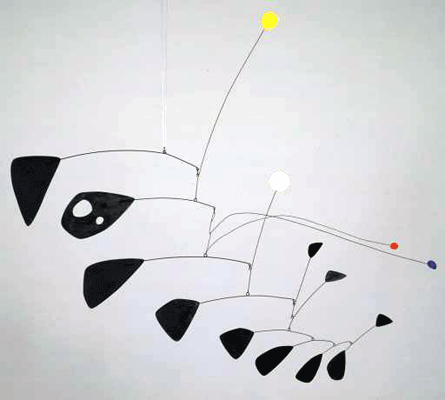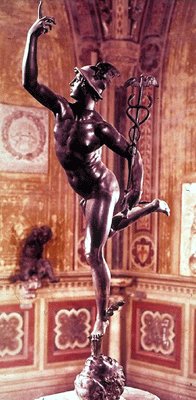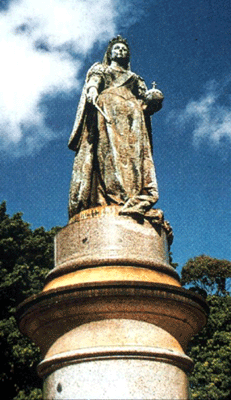
Page 7 of 17
Read the text and study the images below then move on to page 8.
5. Form II
Sculptures are inevitably heavy and need to be well balanced and have a solid base to support them, in order to avoid toppling over. But, while the forms of many sculptures, like the Maillol we have looked at, emphasise this weightiness to achieve a monumental effect, others can suggest lightness. Sculptors who are interested in creating an impression of lightness have often tried to support their works in innovative ways. For example, Giambologna's bronze Mercury balances on one foot on a puff of air, blown by a zephyr. In the twentieth century, sculptors have experimented by suspending their sculptures in various ways, like Calder's mobiles, in which the different elements move in response to the gentlest air currents.


above Alexander Calder, Antennae with Red and Blue Dot, aluminium and steel wire, 1960. Tate Gallery, London.
above Giambologna, Mercury, bronze, 1580. Florence.
Think about the different ways that sculpture can be supported/presented to the viewer. Why do you think sculptures are set on bases/plinths/pedestals? What is the effect when a sculpture is set on a very high pedestal?

above J.E. Boehm, Queen Victoria. Hyde Park, Sydney.